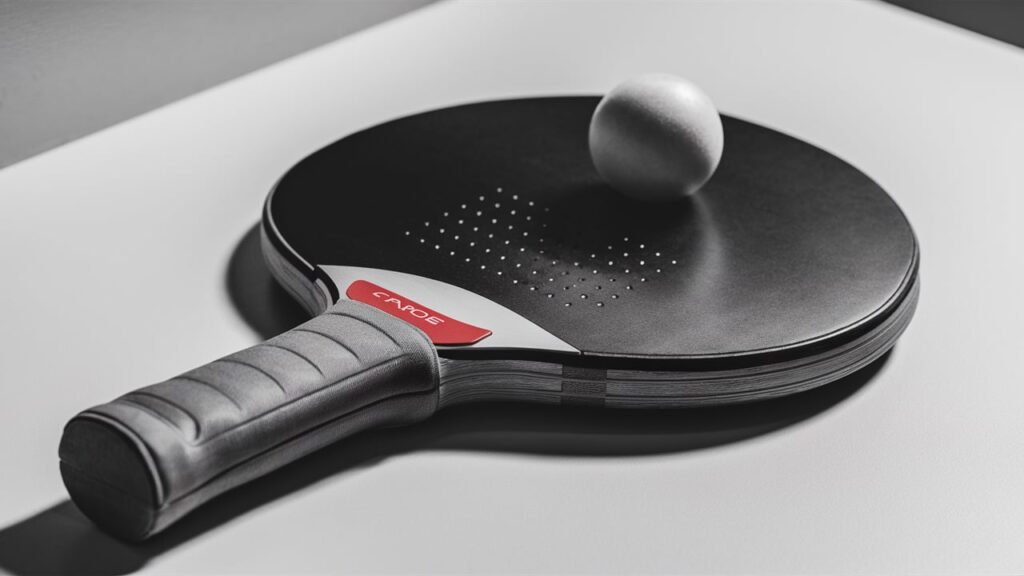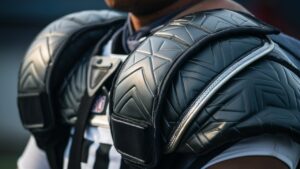Balancing speed and spin in recreational ping pong paddles is crucial. It enhances your game and gives you more control.
Recreational ping pong players often struggle with finding the right balance. Speed helps you strike the ball fast, while spin adds a tricky curve to your shots. Both are essential, but too much of one can ruin your game. Understanding how to balance these two elements in your paddle can make a big difference.
It’s not just about the paddle itself; it’s also about how you play. This guide will help you find the perfect balance for better performance. Read on to learn how to choose the right paddle and improve your ping pong skills.
Choosing The Right Paddle
Choosing the right paddle is crucial for balancing speed and spin in recreational ping pong. The right paddle can improve your game and make playing more fun. But how do you pick the best one for you? Let’s break it down.
Types Of Paddles
There are different types of paddles to consider. Some are designed for beginners, while others are for advanced players. Beginners might prefer paddles with more control. Advanced players might look for paddles that offer more speed and spin.
All-round paddles are great for those who want a bit of everything. They provide good control, decent speed, and enough spin. Offensive paddles focus more on speed and power. Defensive paddles offer better control and spin.
Materials Used
The materials used in paddles affect their performance. Wood is the most common material. It offers good control and a natural feel. Composite materials, like carbon fiber, add speed and power. These are often used by advanced players.
The rubber on the paddle also matters. Different rubbers can affect the spin and speed. Some rubbers are sticky and offer more spin. Others are smoother and provide more speed. Choosing the right rubber can make a big difference.
The sponge layer between the wood and rubber is another factor. Thicker sponges can provide more speed. Thinner sponges offer better control. Finding the right balance is key to improving your game.
Understanding Speed In Ping Pong
Balancing speed and spin in recreational ping pong paddles is crucial for better control. Choosing the right paddle can enhance your game by improving both speed and spin.
Understanding Speed in Ping Pong
Speed in ping pong is more than just how fast the ball travels. It’s about how quickly your paddle can return the ball to your opponent. Achieving the right speed can improve your game tremendously.
A paddle with higher speed allows for faster shots, putting your opponent on the defensive. But too much speed can make it hard to control the ball. You need to find the right balance to suit your playing style.
Choosing the right paddle can be tricky. Let’s break it down with specific factors that affect speed.
Speed Ratings
Manufacturers often rate paddles for speed. These ratings help you understand how fast a paddle can make the ball go.
Usually, ratings range from 0 to 100. Higher numbers mean more speed. If you’re a beginner, start with a paddle rated around 50 to 70. This range offers a good mix of speed and control.
Advanced players might prefer higher ratings. But remember, speed isn’t everything. Balance it with other factors like spin and control.
Factors Affecting Speed
Several elements influence a paddle’s speed. The material of the paddle is one key factor.
Paddles made of carbon fiber are faster than those made of wood. Carbon fiber paddles are light and stiff, providing quick returns. However, they can be harder to control.
Another factor is the thickness of the rubber on the paddle. Thicker rubber usually means more speed. But, it can also reduce your control over the ball.
Your playing technique also plays a role. A good technique can maximize the speed potential of your paddle. Practice and experience help you use speed to your advantage.
Have you ever considered how your paddle’s speed impacts your game? Finding the right balance can make you a more effective player. Take the time to understand these factors and choose wisely.
Understanding Spin In Ping Pong
Understanding spin in ping pong can transform your game. Spin adds an element of unpredictability, making it harder for your opponent to return the ball effectively. Learning how to control spin is crucial for balancing speed and spin in recreational ping pong paddles.
Spin Ratings
Ping pong paddles come with spin ratings. These ratings help you gauge how much spin a paddle can generate. Higher spin ratings mean more grip and control over the ball’s trajectory.
Look for paddles with spin ratings that match your skill level. Beginners might prefer lower spin ratings for easier control. Advanced players often opt for higher ratings to execute complex spins.
Factors Affecting Spin
Several factors influence the spin in ping pong. The paddle’s rubber type is critical. Tackier rubbers grip the ball better, producing more spin.
The paddle’s blade also matters. Softer blades absorb impact and help generate spin. Harder blades, while faster, produce less spin.
Your technique significantly impacts spin. Practicing different strokes like topspin and backspin can enhance your control. Experiment with your wrist movement and paddle angle to find what works best.
Remember the first time you tried to add spin to your shot? It was likely challenging. Over time, understanding these factors will make it easier. You’ll start noticing improved gameplay and more victories.
Have you ever wondered how the pros achieve those jaw-dropping spins? It’s not just their paddles; it’s their mastery of these factors. What changes can you make to your paddle or technique to improve your spin?
Balancing speed and spin in ping pong is a journey. Each adjustment brings you closer to the perfect game. Dive into these factors and see how your play transforms. How will mastering spin change your next match?
Balancing Speed And Spin
Balancing speed and spin in recreational ping pong paddles enhances your game. Choose paddles with rubber that supports both speed and control. This ensures better performance during matches.
Balancing speed and spin in recreational ping pong paddles can dramatically improve your game. It’s about finding that perfect harmony between fast, powerful shots and those tricky, spinning ones. Whether you’re a beginner or a seasoned player, understanding this balance can elevate your performance.
Finding The Sweet Spot
Finding the sweet spot is crucial. It’s where the magic happens on your paddle. A paddle with the right balance allows you to hit faster shots without sacrificing spin.
Experiment with different paddles. Some offer more speed, while others give better spin. Play around and see what feels right for you.
Look for paddles with medium thickness. They often provide a good balance of speed and spin. My first paddle was too thin and lacked power. Switching to a medium-thick paddle made a huge difference in my game.
Adjusting Techniques
Adjusting your techniques can help you balance speed and spin. How you hit the ball matters just as much as the paddle you use.
Practice hitting with different angles. A slight tilt can add more spin or speed. Try tilting your paddle more for spin shots or keeping it flat for speed.
Use your wrist effectively. A flick of the wrist can increase spin. However, using your arm more can boost speed. Balance these movements to find what works best.
Think about your grip. A tighter grip can give you more control, while a looser grip can add speed. Adjust your grip based on the shot you aim to make.
Have you found your sweet spot in balancing speed and spin? What techniques have worked for you? Share your experiences and let’s discuss how to improve our game together.
Paddle Grips And Their Impact
Paddle grips play a crucial role in balancing speed and spin for recreational ping pong paddles. They help players control the ball better, enhancing their overall performance. Choosing the right grip can significantly impact game quality.
When you’re trying to balance speed and spin in recreational ping pong paddles, paddle grips play a crucial role. How you hold your paddle can significantly affect your game. Let’s explore different grip styles and how to maintain them for optimal performance.
Different Grip Styles
There are several grip styles, each with its own set of advantages. The shakehand grip is popular among beginners because it mimics the way you would shake someone’s hand. This grip offers a balanced approach to both speed and spin.
The penhold grip is another style, often used by players who prefer more wrist flexibility. This grip allows for quick changes in direction, perfect for a faster game.
Lastly, the V-grip is less common but offers a unique advantage. It provides a more secure hold, reducing the chances of the paddle slipping from your hand.
Grip Maintenance
Maintaining your grip is as important as choosing the right one. Dirty or worn-out grips can affect your performance. Regularly clean your paddle handle with a damp cloth to remove sweat and dirt.
Consider replacing the grip tape if it starts to wear out. Fresh grip tape can make your paddle feel like new, improving your control over the ball.
Also, store your paddle in a cool, dry place. Excessive heat or moisture can damage the grip material, making it less effective.
By focusing on your grip style and maintenance, you can significantly improve your game. What grip do you find most comfortable and effective? Share your experience and tips in the comments below!
Customizing Your Paddle
Customizing your paddle can significantly impact your ping pong game. By adjusting rubber types and modifying the blade, you can find the perfect balance between speed and spin. This customization helps you play more effectively and enjoyably.
Changing Rubber Types
Different rubber types affect the ball’s spin and speed. Softer rubbers provide more control and spin. They help you place the ball precisely. Harder rubbers increase speed but reduce control. They are suitable for fast, aggressive play. Consider your playing style when choosing rubber types.
Modifying Blade
The blade of your paddle also impacts your game. A thicker blade increases speed and power. It is ideal for offensive players. A thinner blade offers more control and spin. It suits defensive or all-round play. Choose a blade that matches your skill and style.
Practice Drills For Speed And Spin
Practice drills for speed and spin help players balance both elements in ping pong paddles. These exercises improve control and enhance overall performance.
Balancing speed and spin in recreational ping pong paddles can be a game-changer. It’s not just about having the right equipment; it’s also about how you practice. To help you out, here are some effective practice drills for speed and spin. These exercises will elevate your game and make you a more versatile player.
Speed Training Exercises
To improve your speed, focus on quick, repetitive movements.
Forehand and Backhand Drives: Stand at the table and hit forehand drives repeatedly. Switch to backhand drives without pausing. Aim for a steady rhythm to build muscle memory.
Footwork Drills: Your legs are just as important as your arms. Practice side-to-side movements while maintaining balance. Quick footwork can set you up for faster shots.
Multi-Ball Training: Have a partner feed you balls at different speeds. Aim to return each ball consistently. This helps you adapt to varying speeds and improves your reflexes.
Spin Control Drills
Spin can be tricky but mastering it will give you an edge.
Topspin Practice: Focus on brushing the ball upward with your paddle. Aim for a high arc and consistent landing. This drill helps you control the amount of topspin.
Backspin Shots: Practice hitting the ball with a downward motion. This creates backspin and makes the ball drop quickly. Try different angles to see how spin affects trajectory.
Serve Practice: Serving is where you can really use spin to your advantage. Experiment with different grips and paddle angles. See how the ball behaves with topspin, backspin, and sidespin.
Remember, consistent practice is key. Try these drills and see how your game improves. What are your favorite drills for improving speed and spin? Share in the comments below!
Common Mistakes To Avoid
Selecting the right balance between speed and spin in recreational ping pong paddles is crucial. Avoid using overly fast paddles, which can reduce control. Also, steer clear of paddles with too much spin, as they can be hard to manage.
Balancing speed and spin in recreational ping pong paddles can significantly enhance your gameplay. However, many players often make common mistakes that can hinder their progress. Understanding and avoiding these mistakes can save you time and frustration, leading to a more enjoyable and successful ping pong experience.
Overemphasizing One Aspect
A common mistake is to focus too much on either speed or spin. Some players might think that a paddle designed for maximum speed will automatically make them better. Others might concentrate solely on spin, believing it will give them a competitive edge.
Both approaches can be detrimental. If you overemphasize speed, you might find it difficult to control the ball, leading to more errors. Conversely, if you focus only on spin, you might lack the speed needed to surprise your opponent and win points. Balance is key. A paddle that offers a good mix of both speed and spin will help you perform better in various situations.
Ignoring Paddle Maintenance
Another common mistake is neglecting paddle maintenance. Your paddle’s performance can degrade over time if not properly maintained. Simple actions like cleaning the rubber surface and storing the paddle correctly can make a big difference.
I learned this the hard way. I once left my paddle in the trunk of my car during summer. The heat warped the rubber, and my game suffered. Regularly check your paddle for wear and tear. Replace the rubber sheets when they lose their grip. Keep your paddle in a case to protect it from dust and damage.
Neglecting these simple steps can cost you matches. Take care of your equipment, and it will take care of you.
Are you guilty of any of these common mistakes? It’s never too late to make adjustments and improve your game.

Frequently Asked Questions
How Do You Get Good Spin In Ping Pong?
To get good spin in ping pong, use a loose grip and brush the ball’s surface. Focus on wrist action and follow through. Practice different spin techniques regularly.
How Do Ping Pong Players Get So Much Spin?
Ping pong players generate spin using wrist action, paddle angle, and rubber grip. They brush the ball’s surface quickly.
How To Make Your Table Tennis Bat Have More Spin?
Use high-quality rubber for your bat. Apply a tacky surface for better grip. Improve your technique and wrist action. Regularly clean the rubber for optimal performance.
How Do You Hold A Ping Pong Paddle For Spinning?
Hold the ping pong paddle with a loose grip. Use your thumb and index finger for control. Angle the paddle slightly forward. Rotate your wrist for spin. Practice different grips for varied spins.
Conclusion
Balancing speed and spin in ping pong paddles is crucial. Choose paddles wisely. Test different paddles to find your best fit. Practice regularly to improve control and performance. Understanding paddle types helps in making the right choice. Develop your skills with consistent play.
Enjoy the game while enhancing your technique. The right paddle makes a noticeable difference. Keep experimenting and playing. Happy ping pong!








